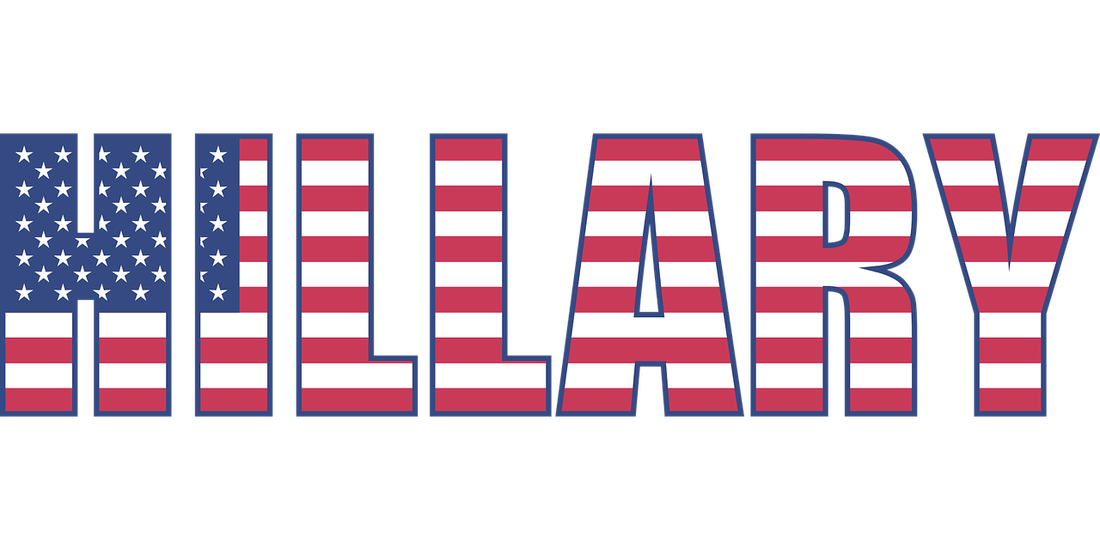 Democrats wrapped up their convention in Philadelphia last week, selecting Hillary Clinton as their presidential nominee. Clinton is the first woman to ever lead a major party ticket. The convention got off to a rocky start. Just before the convention got underway, Wikileaks released tens of thousands of hacked emails from the Democratic National Committee (DNC) that showed the organization tried to undermine the campaign of Clinton's primary rival Bernie Sanders, senator from Vermont. The DNC is not supposed to take sides during the battle for the nomination. The emails also reinforced Sanders' longtime claim that the system is rigged. DNC chair, Debbie Wasserman Schultz, was forced to step down. Sanders' supporters were furious and staged protests and walkouts. During the initial speeches, many delegates booed when Hillary Clinton's name was mentioned. It was an inauspicious start to the convention. However, the Democrats eventually managed to pull their convention back from the brink. Here are the convention highlights. This information will aid in completing questions, exercises, and activities for the lesson on conventions in the Presidential Elections unit study. Monday, July 25, 2016: United Together Senator Bernie Sanders gave a speech to a roaring crowd. He gave an emphatic endorsement of Hillary Clinton, which is largely credited with bringing the convention back together. First Lady Michelle Obama gave a speech that was also well received. "I wake up every morning in a house that was built by slaves," Michelle Obama said, noting that because of Hillary Clinton, her daughters may take for granted that a woman could become president. Senator Elizabeth Warren mainly used her speech to attack Donald Trump. Tuesday, July 26, 2016: A Lifetime of Fighting for Children and Families Delegates voted on Tuesday. Clinton received 2,838 votes, surpassing the 2,382 she needed. Sanders received 1,843 delegate votes. Bill Clinton was the featured speaker on this night. The role of the spouse of the candidate is mainly to humanize him or her. And Bill Clinton tried to do just that, speaking about how he and his wife met, her family, and her Methodism. Wednesday, July 27, 2016: Working Together Senator Tim Kaine of Virginia accepted the Democratic nomination on Wednesday. Vice presidential nominees usually perform the role of attack dogs. Kaine told delegates, "Folks, you cannot believe one word that comes out of Donald Trump's mouth." It was also a chance for Kaine to introduce himself to the nation. He told about how he was educated at a Jesuit boys' school; worked at a Jesuit missionary school in Honduras; became a civil rights lawyer; was elected mayor of Richmond, governor of Virginia, and finally U.S. senator. Thursday, July 28, 2016: United Together The nominee's daughter Chelsea Clinton introduced her mother, as Ivanka Trump had done for her father. The candidates' daughters have had an unprecedented role in these campaigns and conventions. Chelsea Clinton's speech was also meant to humanize her mother, offering many personal anecdotes. Finally, Hillary Clinton, gave her acceptance speech. DNC Convention Activity: The challenge this week is to watch the speech of former first daughter Chelsea Clinton. Find it here. Answer the following questions: 1. How was Hillary Clinton as a mother, according to Chelsea? 2. What kinds of things did Hillary Clinton do to show her daughter love? 3. What books did Chelsea Clinton mention and why did she mention them? 4. Why did Chelsea Clinton say she was proud of her mother? 5. Did Chelsea's speech change your view of Hillary Clinton? How?
0 Comments
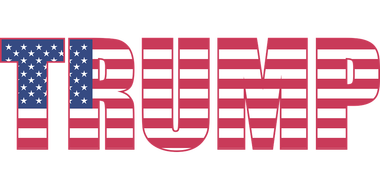 The Republican National Convention was held this past week in Cleveland, Ohio. It was certainly one for the history books, unlike any in recent memory! Donald Trump received and accepted the Republican Party's nomination. Here are some highlights including themes and speakers. The themes for each night related to Donald Trump's "Make America Great Again" campaign theme. You can view the full convention program on Politico. Monday: "Make America Safe Again" The featured speakers included Rudy Giuliani, former New York City mayor; Donald Trump's wife, Melania; General Michael T. Flynn; and Jason Beardsley, Special Operations Adviser. The big news from the night was about Melania's speech. An unemployed journalist sitting at a Starbucks noticed that portions of her speech sounded like Michelle Obama's 2008 convention speech. He posted the passages on Twitter, making national news. A Trump campaign speechwriter took responsibility for the copied passages and offered her resignation, but Donald Trump did not accept it. Tuesday: "Make America Work Again" Donald Trump's family was on display at this convention, an effort to soften his image and help voters see the personal side of the candidate. Tuesday's lineup of speakers included Tiffany Trump and Donald Trump, Jr. It also included speeches from Paul Rylan, Speaker of the House, who told viewers about his conservative policy program for the country. Viewers also heard from two of Trump's primary opponents, Chris Christie, New Jersey governor, and Dr. Ben Carson. Also, on Tuesday, the delegates voted for the party nominee. Trump won, as expected, receiving 1,725 delegate votes. He needed 1,237 to surpass the delegate threshold. In an exciting moment on the convention floor, Donald Trump Jr. announced the votes from New York, which put his father's vote total over the threshold. Trump did not win the unanimous votes of the delegates, however. In Colorado, for example, Trump got 4 votes, compared to 31 for Ted Cruz, senator from Texas, and 2 abstentions. Wednesday: "Make America First Again" Eric Trump, another of Donald Trump's sons, gave remarks on Wednesday. Newt Gingrich, former House Speaker, also gave remarks, as did Trump's primary rival Ted Cruz. Mike Pence, governor of Indiana, accepted the vice presidential nomination. The most memorable event of the evening was supposed to be Pence's speech. However, Pence was upstaged by the controversy surrounding Ted Cruz, Trump's. During Cruz's speech, when it became clear that he would not endorse Trump and help unify the party, the delegates booed him off the stage. Thursday: "Make America One Again" Donald Trump's daughter, Ivanka Trump, an entrepreneur and mother of three, introduced her father with a speech designed to appeal to women voters. Donald Trump concluded the convention by formally accepting the nomination and giving a speech that lasted about an hour. Trump emphasized a "law and order" message, responding to fears surrounding recent eruptions of violence both at home and around the globe. While some analysts classified his speech as dark and gloomy, others thought he appeared professional and presidential--a positive image that could threaten Hillary Clinton's campaign. Challenge for this Week Watch a speech delivered by one of Donald Trump's children: Donald Trump Jr. Eric Trump Ivanka Trump Answer the following questions: 1. What personal characteristics of Donald Trump did the speech highlight? a. as a businessman b. as a father 2. What did the speech say Donald Trump will do for the American people? 3. What was your favorite personal story Trump's son or daughter shared? 4. How, if at all, did the speech change your impression of Donald Trump? For detailed lessons, resources, and exercises on the election, check out our Presidential Election Unit Study. 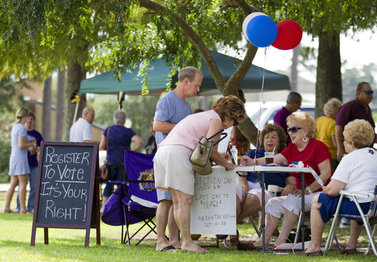 For a fun and participatory activity this week, let's consider having your homeschool student sign up a citizen to vote. In the U.S., you must be eighteen years old to register to vote. But Americans of any age can encourage or assist another citizen in registering to vote. As I was walking on the pedestrian mall in my town this past weekend, I came across a group of volunteers who were registering people to vote. I had moved recently and needed to update my address. I had tried that week to print an online form, but my printer was broken. I asked them if I could take a form home with me to fill out and send in myself, and they said "no," which was a strange since the forms are property of a public office. I then declined to fill out the form in their presence, since they were volunteers from a political party and not state workers, so I could not be exactly sure who would be viewing my personal information and what they would be doing with it. The incident also reminded me of an article I had read by Karl Rove, a Republican strategist and advisor to George W. Bush, in the Wall Street Journal last week about the battle to sign up voters. We do not often hear about voter registration in the news, but this battle is indeed being waged by the parties and in towns and communities around the country. Rove wrote that in 2012, there were about 235 million Americans who were of voting age, of which only 153 million were registered. Most of these were younger people who were less interested in politics. That's a huge number of people, especially young people, who are not registered! Republicans and Democrats can draw many, many supporters from this group. They just have to track them down and get them to turn out. That's exactly what the people I ran into this weekend were trying to do. The parties have been hard at work signing up unregistered voters, especially in the battleground states. In Florida, for example, Republicans added 114,126 registered voters, while Democrats lost 184,833 registered voters. President Obama won Florida by 74,309 votes in 2012. The challenge this week will help students familiarize themselves with the voter registration laws in their states. Remember that the states control many elements of election law, including how to register. This week's challenge: Help register ONE person to vote Maybe your cousin just turned eighteen or you have a close family friend who recently moved. Consider helping them register to vote or update their information so that they can vote in the 2016 election. First, go to the website vote.usa.gov to find out the voter registration laws for your state. The National Conference of State Legislatures also has useful information. Print the potential registrant out a form, pick one up at the Department of Mother Vehicles, or guide the person through the process online. Make sure you know your state's process so that you can answer questions! Parents should, of course, supervise. After the activity is complete, have your student answer these questions: 1. Who is eligible to vote in your state? 2. How and where can residents fill out an application? What information must they provide? 3. What are the deadlines for registering to vote? 4. Do you think the voter registration process in your state is hard or easy and why? 5. Did you run into any problems? Were there any questions you could not answer? 6. How could the voter registration process in your state be made easier? For detailed lessons, tips and resources to educate your child about the election, check out our Presidential Election Unit Study. Vice Presidential Running Mate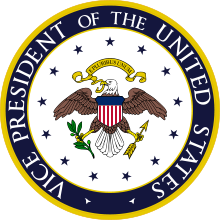 During the weeks (happening now) between the end of the primaries and the party conventions, the candidates must pick their vice presidential running mates. Together, the president and vice president make up the party “ticket.” In November, citizens will vote for president and vice president together as one ticket. How do candidates decide on their vice presidential running mates? Each campaign has a vice presidential search committee in charge of vetting (carefully examining) the candidates. This is done in secret. However, this year, Donald Trump, the presumptive Republican nominee, has been tweeting about his meetings with potential running mates. Additionally, vice presidential running mates are chosen for a variety of reasons. Today, vice presidents are chosen to help win over American voters. In particular, they should make up for an area where the candidate is lacking or compensate for a weakness. Consider also these other factors:
Weekly Challenge The challenge this week is to make some guesses about who the vice presidential running mates will be. Here are the instructions:
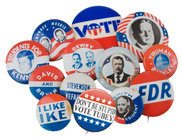 Learn more! For more information on how to homeschool through the 2016 election, including lessons on election strategy and the vice presidential nominee, check out the Presidential Elections unit study, available now from Silverdale Press!  Poor writing is the norm. As an attorney, I read and write for a living and I see literally hundreds of writing examples a week from everyone from students to experts. Many of these writers are masters of the technical details of writing, their grammar is perfect, their sentence structure is sophisticated and their vocabulary is extensive. In short, these folks could pass most writing curricula with flying colors. And, yet, in many instances, their writing is bad - its muddled, confusing, hard to read, hard to follow, illogical, and in some cases incomprehensible. Why is this? One simple reason: learning the technical details of writing does not create good writers. Good writing requires good thinking. To be a good writer, you must not only be able to write well but you must also be able to think well. To put it differently, if you have not done a good job thinking about what you are going to write, your writing will be bad. In classical times, educators understood this principle. In fact, much of their training was focused on teaching children to think and analyze. Classical educators devoted much of the second and third stages of the trivium (middle and high school) to teaching children to think logically and then persuasively. Today, the best writers still understand the need for good thinking. During my convocation in law school, the dean told us, "You all came here to learn about the law. We are not going to teach you about the law - you can learn that on your own. We are going to teach you to think!" Expert writers agree - good writing is good thinking. Malcolm Gladwell, the author of several New York Times bestsellers, has acknowledged: "For every hour I spend writing, I spend three hours thinking about writing." David McCullough, the author of many popular biographies, has said: "Writing is thinking. To write well is to think clearly. That's why it's so hard." George Orwell confirmed that bad writing is actually bad thinking: "If people cannot write well, they cannot think well and if they cannot think well others will do their thinking for them." Children are not taught to think well. Unfortunately, today’s children are often not taught to think well. They are taught how to put together sentences and paragraphs, but not thoughts and ideas. They are taught to use words and clauses, but not arguments and evidence. They are taught to write their thoughts, but not to organize those thoughts before writing. Tips on how to teach your children to think well. So, what can we as homeschool parents do to train our children to think well? It begins with recognizing the goal of thinking well. I’ll be writing a series of articles in the next several weeks with practical tips on how to teach a child to think well. To receive a notification when these articles are published, sign up for our writing newsletter. |
Silverdale PressCheck out our About Page to learn more about us! Categories |

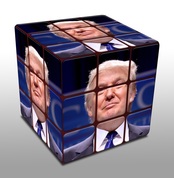
 RSS Feed
RSS Feed